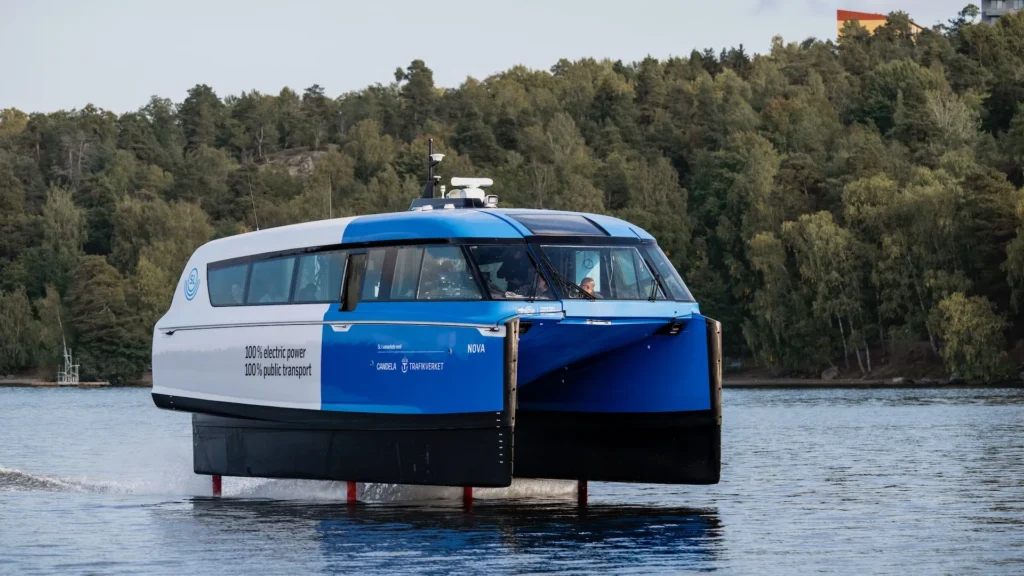Sweden’s Electrifying Innovation Extends Beyond Cars
Sweden is renowned for being the birthplace of Volvo and Polestar, but the Scandinavian country is now electrifying more than just automobiles.
Recently, a groundbreaking electric hydrofoil ferry service was launched in Stockholm, connecting commuters across the 14 islands that form the Swedish capital. The service, operated by Stockholm’s public transit operator SL, commenced with 25 passengers boarding the electric hydrofoil, named Nova, in the suburb of Ekero, as reported by the Associated Press.

Candela electric hydrofoil ferry enters service in Stockholm
The Nova, the first of the P-12 hydrofoils from electric boat manufacturer Candela to join SL’s fleet, elegantly glided about three feet above the water during its 30-minute journey from Ekero to Stockholm’s city hall, a significant time improvement compared to the 45-minute trip taken by diesel ferries.
Hydrofoils, like the Nova, elevate their hulls above the water at high speeds, relying on extended struts (foils) for stability. This innovative design reduces drag, resulting in an impressive 80% reduction in energy consumption in comparison to traditional vessels, according to Candela CEO Gustav Hasselskog. Furthermore, the hydrofoil’s wakeless operation exempts the Nova from the speed limits in Stockholm’s waters.
With a cruising speed of approximately 29 mph—faster than conventional boats—the Nova is engineered to accommodate 25 passengers, including provision for wheelchair accessibility.
Just as electric buses are transforming urban transportation systems, electric watercraft like the Nova have the potential to significantly decrease emissions from public transit in Stockholm. The AP notes that ferry services have experienced rapid growth in popularity since the onset of the COVID-19 pandemic.

Candela electric hydrofoil ferry enters service in Stockholm
Candela’s collaboration with Polestar, which recently secured a deal to supply batteries and charging technology to the company in 2022, underscores Polestar’s strategic initiative to develop its own batteries and propulsion systems.
While several electric ferries have been deployed in addition to the Nova in Stockholm, the initial investment required for their implementation can pose a financial challenge. The size of cruise ships may render them unsuitable for battery-powered propulsion, though there is a growing trend towards adopting hybrid systems in this sector.

